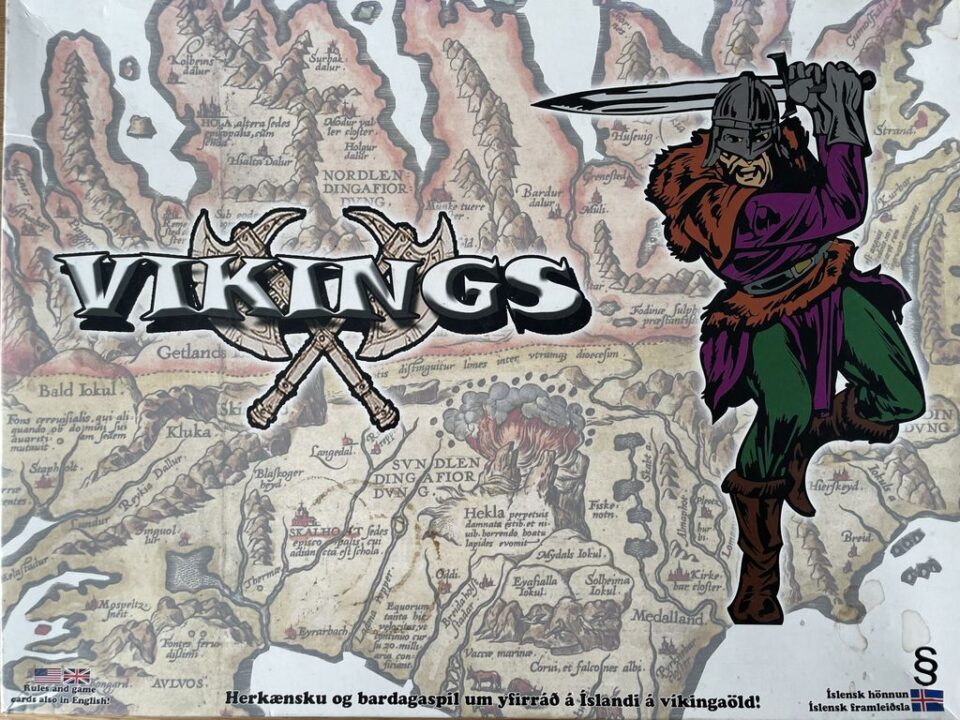If you ever wondered what it feels like to run your own Viking settlement without the risk of actual sword wounds, you’re in the right place. This is my review of a game that promises plundering, planning, and possibly (moral) pilfering from your friends. I’ve played it more times than I’ve eaten questionable meatballs at IKEA. I’ll tell you what works, what doesn’t, and whether it’s worth wearing a horned helmet over. Spoiler: the only thing luckier than drawing the right tile is convincing your group to play it again with you. Let’s check if this Viking quest is legendary or just another trip to the fjords of mediocrity.
How It Plays
Setting up
Lay out the circular wheel thingy in the middle. Give every brave soul a starting island board and some coins. Place all the colored meeples and tiles where they belong. Stack the ships nearby—don’t panic, they won’t hit you… probably.
Gameplay
Take turns picking tiles and Vikings from the wheel with your hard-earned coins. Attach tiles to your island and plop down Vikings in helpful spots. You’ll argue with your friends over who took your spot. That’s normal. Watch out for ships! They eat Vikings if you’re not careful. Scoring happens throughout, so keep one eye on your points and the other on your enemies—I mean, friends.
Winning the game
Once the last tile is gone, count your points. Did you feed your Vikings, protect your shores, and outwit everyone? The player with the most points wins, gets bragging rights, and first pick of the snacks at the next game night.
Want to know more? Read our extensive strategy guide for Vikings.
How Vikings Stands Up: Mechanics and Balance in the Arena
So, my friends and I sat down at the table, axes in hand (not real ones, settle down), ready to see if Vikings would make us clever chieftains or just confused villagers. The game is all about building your own little slice of Norse heaven, but instead of dragons and wild quests, you’re snatching up tiles and managing resources to rack up the most points. It’s got that classic tile placement thing, but with a twist: you draft tiles from a wheel, and where you choose from affects your gold and options. I love that little wheel—makes me feel clever, but also kind of hungry. It looks like pie.
Now, here’s where it gets spicy. You have to balance getting cheap tiles with low points or spending your precious coins for better ones. My buddy Dave tried to hoard coins early on and ended up with a pile of fisherman and no way to actually feed them. Meanwhile, I blew my savings on one shiny tile and had to beg for coins by the end. The game rewards planning, and if you’re the type who loves weighing options, you’ll have a blast. The randomness of the tile draw is there, but it feels fair. There’s not much luck—no dice to blame when you lose, so my whining was pretty limited.
The balance is strong. No one snowballs into a huge lead, and there’s plenty of room to recover from mistakes. Next, let’s see if the components are as sturdy as a Viking’s shield—or as flimsy as Dave’s strategic plans.

Component Quality and Artwork: Setting Sail in Style with Vikings
Alright, let’s talk bits and boards. When it comes to Vikings, you get an impressive box of goodies that somehow makes you feel like a Norse king, minus the risk of an axe to the head. The wooden meeples are chunky and satisfying (can’t confirm if edible, my friend Steve tried and only got splinters). I honestly wish more games gave you this many little dudes to play with. The tiles themselves? Sturdy, thick, and they could probably survive a real Viking raid. I dropped one and it barely dented my carpet.
The main board looks like it could be a page from an old, weather-beaten map. There’s just enough detail to feel thematic, but it never gets so busy that my cousin Barry gets confused and tries to herd the meeples off the edge. The art is clean, colorful, and makes you want to build your own little island chain. And those boats! They may be small, but they always catch your eye when you’re plotting to snag a tile before your neighbor does.
I also appreciate that the iconography isn’t cryptic. Even if you’re as sleep deprived as I was after our all-night Viking marathon, you can still tell a fisherman from a noble. My only gripe is the rulebook font size. If you’re over thirty, bring your reading glasses. Seriously, it’s like the scribe was saving ink for Ragnarok.
Next time, I’ll spill the beans on how Vikings gets folks talking (and sometimes yelling), and why you might suddenly develop trust issues around your friends. Player interaction and strategy are about to set sail!
How Vikings Encourages Player Interaction and Deep Strategy
Let me tell you, when it comes to player interaction in Vikings, don’t expect to just sit in silence, moving tiles like a bored accountant. Oh, no. This game puts you in the middle of an ever-shifting Norse soap opera. At my last game night, we had three people scheming over the purchase order of those precious tiles, and the looks were deadlier than any Viking sword.
The central mechanism is the rotating wheel of tiles. Here’s the trick: not only are you grabbing tiles for your own board, but you’re also keeping a careful eye on what your neighbors need. I love watching my friend Barry try to grab that elusive blue viking, only for someone else to snatch it out of pure spite—beauty in board game form. You’ve got to read the table because making the right move at the right time can mean the difference between a thriving colony and absolute ruin. Vikings punishes tunnel vision. Ignore those on your left and right, and soon enough, they’ll be laughing as your ship sinks.
Another thing I enjoy is the balance between short-term tactics and long-term planning. You need to build your island with future rounds in mind, but you also have to improvise when someone blocks your best-laid plans. I’ve seen alliances form and break in the same evening, and it all comes down to the strategic push and pull of tile selection. If you enjoy games where reading people is half the battle, Vikings will scratch that itch like a wool sweater after a day on a Viking longship.
Now, speaking of itching for more, let’s talk about how often you’ll want to replay Vikings, and whether your granny can handle the rules straight out of the box…
How Many Times Can You Raid? Vikings’ Replay Value and Learning Curve
Let’s rap about replay value, because nobody wants a one-hit-wonder sitting on their shelf. Vikings promises plenty of life before your friends banish it to “that weird box in the closet.” I have played it at least a dozen times—and not just because I lost a bet. The game mixes things up via that spinning tile wheel (which sounds like a medieval game show, but less awkward). Each play shifts the order and cost of islands, ships, and Vikings, so you never get the same setup twice. There’s also some sneaky strategy: should you splurge on a fat island now, or save your coins for a cheap boatman later? This keeps everyone awake, including Steve, who once dozed off during Monopoly.
Learning curve? Not bad. The rulebook needs a bigger font (seriously, my eyes ain’t what they used to be), but once you get it, Vikings is smooth. It takes about 15 minutes to teach—less if your group listens, longer if someone stops to google “What did Vikings actually wear?” Newbies can compete too, but veterans have an edge. The beauty is that every round, you spot fresh ways to snatch up points or block rivals. My group picked it up fast, and now everyone thinks they’re the next Scandinavian king.
Would I recommend Vikings? Aye! It’s never the same twice, and it won’t fry your brain. If you like planning, some light rivalry, and games that don’t last longer than a Norse winter, Vikings deserves a spot on your table. Just bring your reading glasses and a sense of adventure!
Conclusion
Well, there you have it, folks—my epic journey through the world of Vikings comes to an end! This game’s got balanced play, cool Viking bits, and enough strategy to keep my competitive uncle scheming all night. While the rulebook font made me squint like a wannabe Odin, that’s really my only big gripe. If you want a well-crafted game that won’t make you lose friends or your temper, Vikings is a great pick. Thanks for tagging along on my longboat of opinions, and may you raid many meeple villages ahead!


